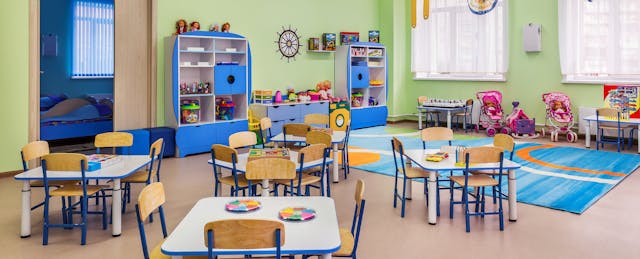At the end of June a group of passionate, dedicated educators gathered for one of New Jersey’s last EdCamps of the 2017 school year. I bounced around a few sessions but settled into one called “Flexible Furniture.” The idea is that, instead of assigning students in traditional rows of desks, they would have a choice as to where they sit.
The conversation was underway when I walked in. The facilitator shared pictures of sleek, stylish yet functional seats, tables and “Starbucks”-style setups while others asked questions and shared ideas about how to get the latest furniture in their classrooms. Some offered contact information about “classroom designers” and school vendors. All which came with a hefty price tag.
The idea of dressing up one’s classroom with the flair and freedom that one might find at IKEA is certainly alluring. But sometimes these conversations focus too much on the furniture, at the expense of how they shape the learning environment. It’s like fixating on the technology with considering how we can best use these tools.
And let’s be honest: How many school districts are going to budget thousands of dollars to deck out one classroom when they already have perfectly good desks and chairs? (And how many elementary and middle schoolers do you see hanging out at Starbucks?)

Here’s the thing: With some craftiness, it is possible to give your classroom a makeover without forking over thousands of dollars. Fifteen years ago, when I was a middle school English teacher, I introduced flexible seating to my class, before it became the latest buzzword. It began with a few small throw rugs, a few beach chairs that had seen some better days, and a beanbag chair that I begged a local store to donate.
Since then, I have outfitted my classroom a little at a time using Amazon, Ikea, Five Below, and DonorsChoose all for around $250. I make sure to include my students in the design process and allow them to move the seating about the room as they see fit.
Focusing on decorations and interior design alone is missing the point, however. What’s more important is that my style of teaching started to change along with the seating options. I went from predominantly whole-group, teacher-led lectures to a more student-centered, personalized way of working with kids. This was possible because the new layout of the room allowed students to move about freely, choosing a space that works best for them. Kids began to naturally gravitate towards one another and their workflow began to change. As I noticed these changes I also realized I needed to refine my methods of instruction to better meet the needs of my students.
I found myself able to reach students—and help them support one another—in new ways. Instead of seeing a student’s writing assignment for the first time when they submitted it to me, I would pull up with small groups of kids on the rug to share what they were writing about during their drafting process. This allowed me to provide valuable feedback long before they shared their piece with their peers or submitted it for a grade.

Whole-class novels morphed into book clubs. Students began to ask if they could choose their own books to read together in small groups while lounging in beach chairs. This led to rich conversations and more engaged readers. I even brought back the daily read-aloud activities in my rocking chair from my days as an elementary teacher—against protest from colleagues that “storytime” had no place in middle school. (That’s a story worth telling—perhaps for another blog post!) My kids would love to sprawl on the carpet (a much larger one by that time), in the beanbag chairs (I got a few more donations), or on the beach chairs (always a popular choice) to listen to me read “Number the Stars”, “Esperanza Rising” and other literary classics while on the edge of their seat, hanging on every word.
Keep in mind I still had desks and chairs in the room, albeit they were placed in groups and not in rows. There were always a few that preferred sitting at a desk. But flexible seating is about options and finding the best place to do your best work.
That EdCamp session ended up covering something more important than how many scoop chairs you have in your classroom: finding more meaningful ways to reach our students by being flexible as a teacher. If the kids are laying on the rug reading, then why not plop down next to them and have your conference right there? If they would rather curl up on the windowsill with their writing notebook, instead of sitting at a desk with a Chromebook, why not let them be? If talking through a math problem while bobbing on a stability ball works for that child, then why not? It behooves us as educators to meet our students where they are.
Recognizing and honoring students’ choices—even something as small as how they sit to experience their learning—creates a safe place for them to learn and grow. As the new school year approaches and you start thinking about how you set up your classroom, keep this in mind: It’s really not about the furniture.


